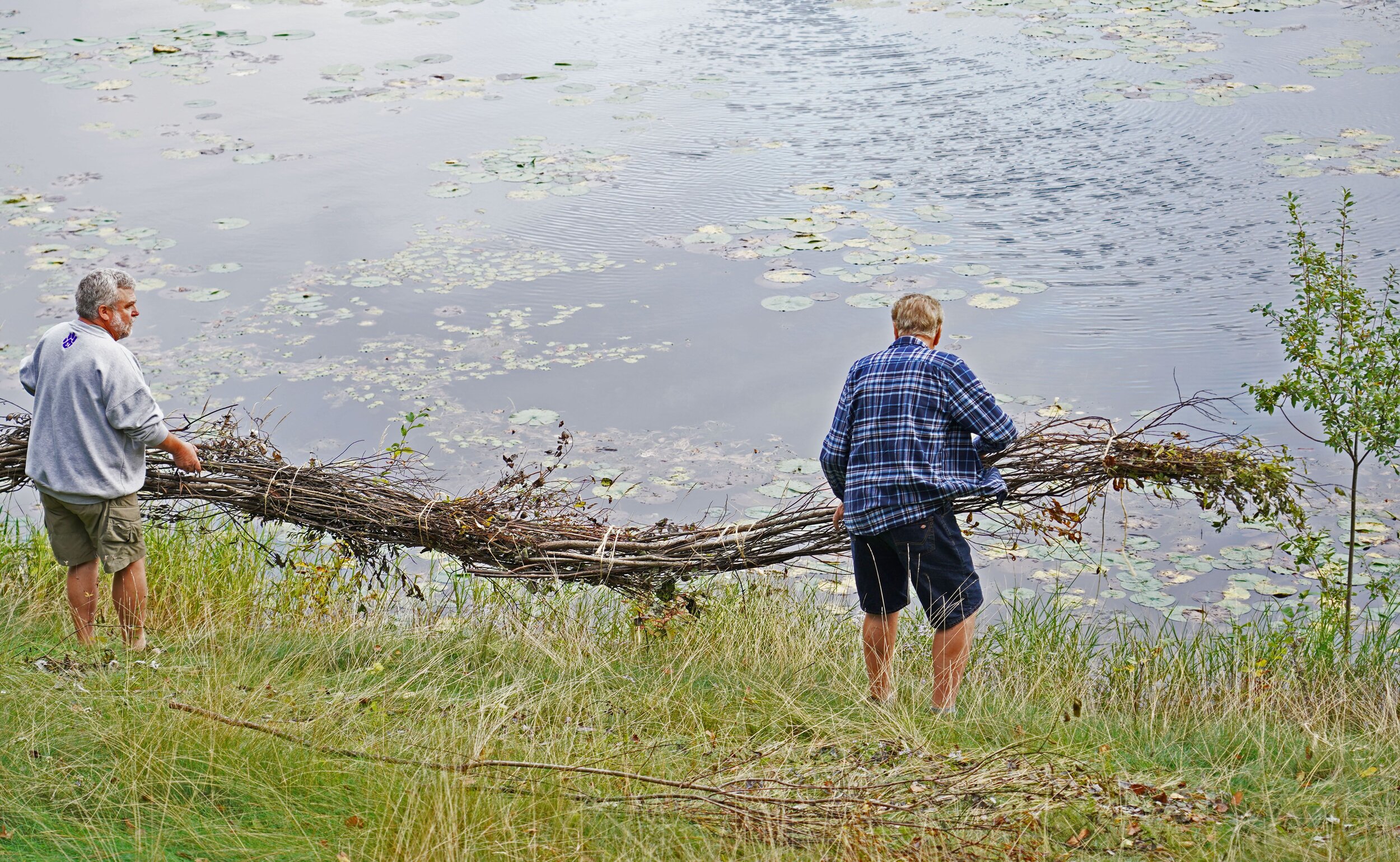
Shoreland Restoration
Shoreland Project Information
Join us at one of our Shoreline Restoration community builds! Below are the dates and times for our 2025 projects. If you’d like to get involved, please contact Kristie Roedl at kristieplummerroedl@gmail.com.
2025 WAPOA Shoreland Restoration Projects:
Friday, June 27th @ 11:00am on Crosslake
Monday, July 7th @ 9:00am on Lower Hay Lake
Friday, July 11th @ 9:00am on Lake Bertha and Whitefish
Friday, July 18th @ 9:00am on Ruth Lake
Monday, July 28th @ 9:00am on Ossi Lake
Do you want to create a buffer zone at your shoreline?
A buffer zone is an area of land next to the lake that is cleared of existing weeds and grass. Native wild flowers and grasses are then planted. This buffer acts to filter the water running off of the lawns to reduce the amount of fertilizers, pesticides and soil running off into our lakes.
Kristie can put you in touch with local vendors. Email Kristie for more information.
Kristie Roedl and Shannon Watters showcase the shoreland restoration project that was done at Camp Knutson in Crosslake. Learn a little bit about how this important work can look when it is done, what the positive effects in can have on our waterways and how to get involved with this work on your own property.
Soil Wraps for a Steep Slope
(Written by Jodi Eberhardt)
It's truly amazing to see how soil wraps, native plants, and four years of time can change a shoreline. In 2019 WAPOA and the McGruder family worked together to prevent erosion on incredibly steep slopes.
The project used "soil wraps" to prevent erosion and help new plants get started. A soil wrap is an erosion control blanket filled with soil that runs across the slope to slow down water. For more information, check out the Crow Wing Soil and Water's video on how to use soil wraps on steep slopes.
Thank you to WAPOA and the McGruder family for sharing their photos and helping to improve water quality!
BEFORE: Steep slope planting with native plants, erosion control blanket, and soil wraps
AFTER: Four years later, the almost bluff-like hill is covered in green.
AFTER: Native plants have returned.
Why is our Shoreland so important?
"The shoreline tells all, about the water
What there is to do, what there is for you.
Without habitat, without vegetation,
Nothing can live, the lake will be through.
Oh dragonflies and leopard frogs, you're what I'm looking for.
The shoreline is a home for you when we take care of it more... "
~Shoreline Song, (Full length version). Carolyn Dindorf & Roman Rowan
© 2001 Performed by Carolyn Dindorf, Roman Rowan, and Aaron White.
A healthy shoreland supports a diverse community of fish and wildlife by providing native vegetation that fulfills their habitat needs where land and water meet. Native vegetation provides important water quality functions by slowing and filtering water runoff as it moves to the lake or stream. Shorelines with a diverse mixture of native plants extending inland as well as offshore of the bank are more resilient to wave and ice erosion. Our lakes, streams and wetlands need healthy shorelines to reduce runoff, filter pollutants, and provide important habitat functions that benefit fish and wildlife.
Shoreland Restoration Resources
The Water’s Edge — MN DNR
Restore Your Shore — MN DNR
Shoreline Alterations: Natural Buffers and Lakescaping — MN DNR
Lakescaping and Shoreland Restoration — MN DNR
Healthy Shorelines — MN DNR
Landscaping Before and After Photos — MN DNR
Caring for Land and Water - Land and Waters Preservation Trust




